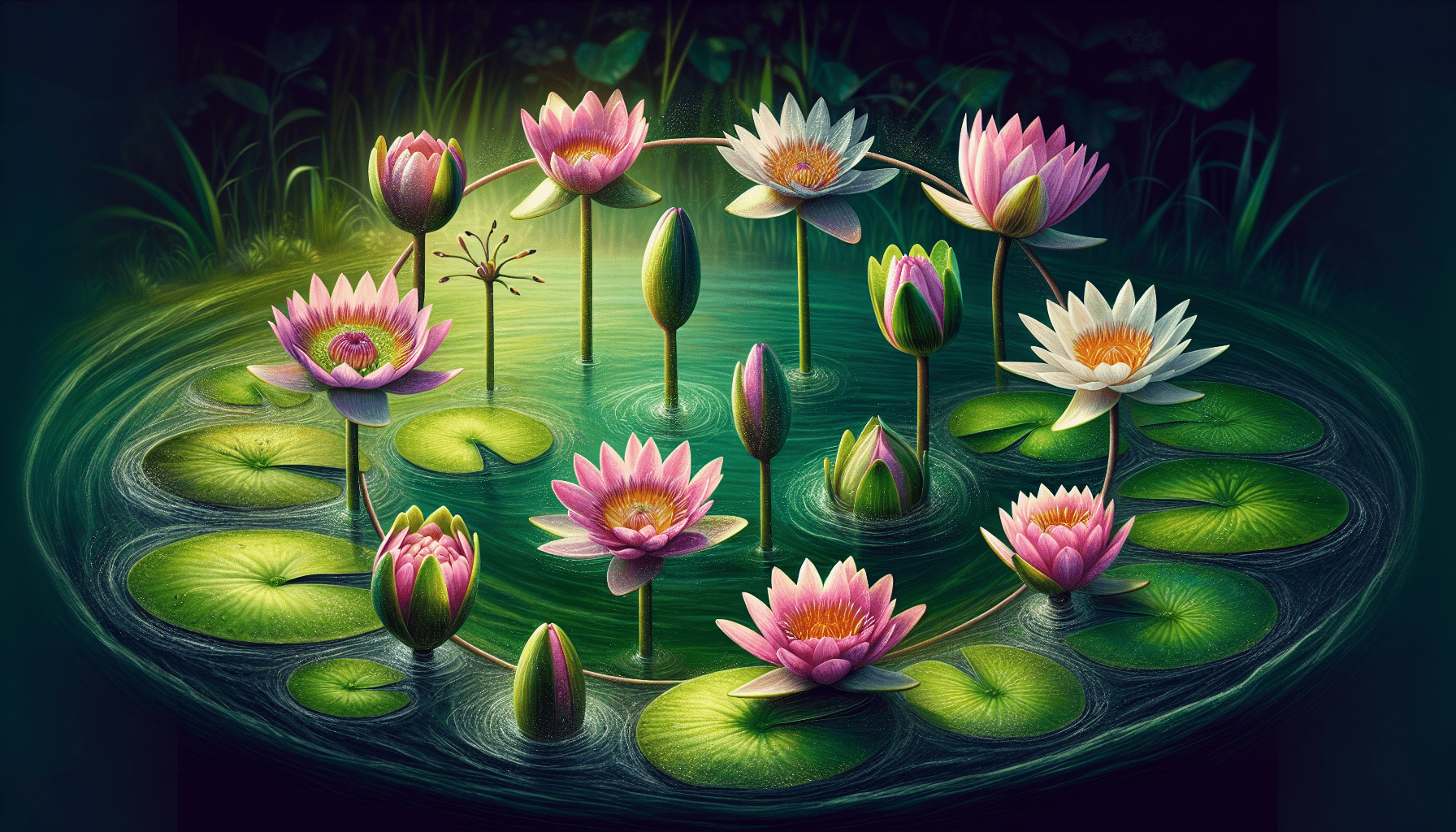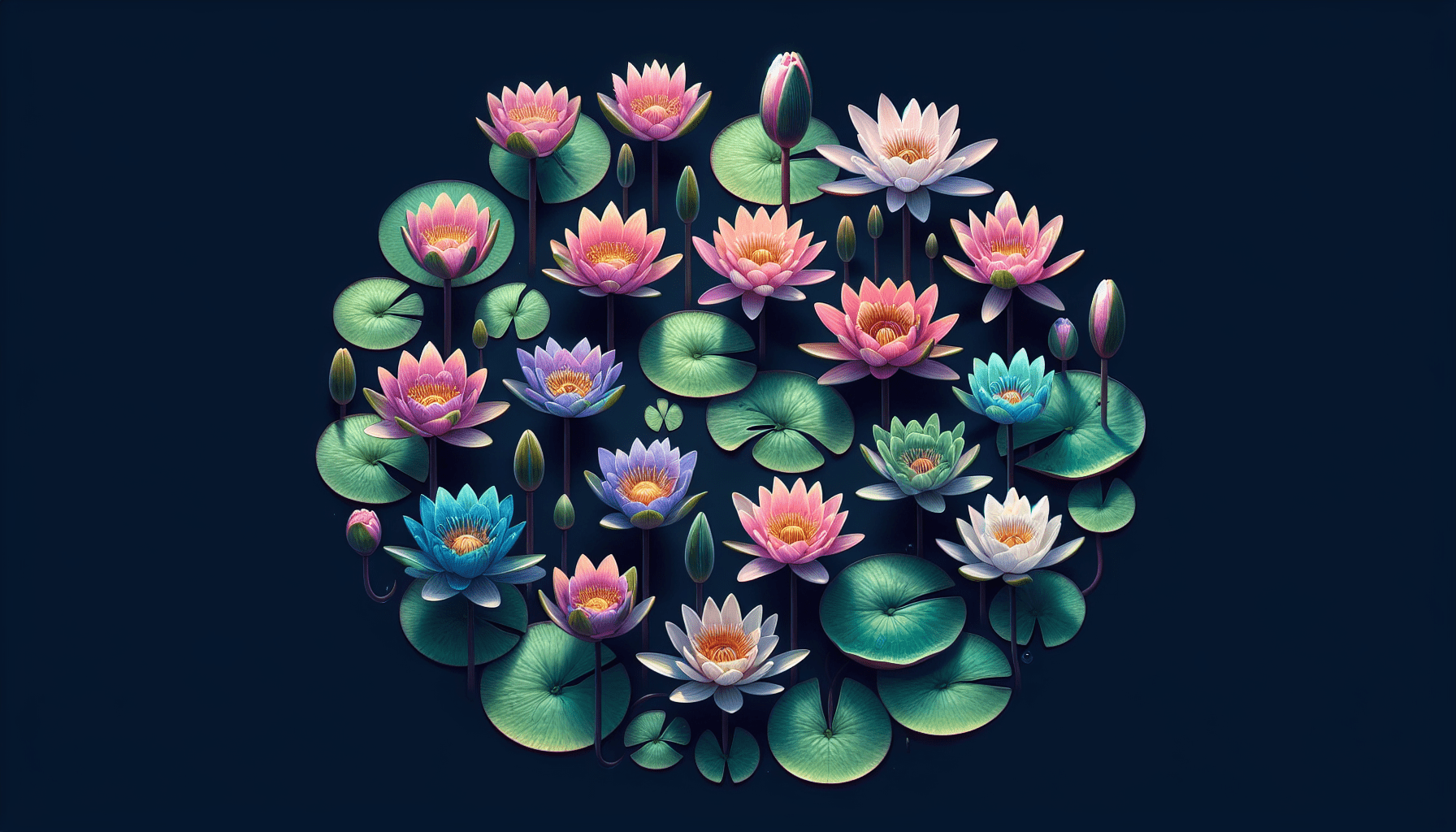Navigating the intriguing world of aquatic flora, you may very often come across the term ‘Nymphaea,’ more commonly classified as an aquatic weed. The scope of this article is to enrich your understanding of what Nymphaea is, emphasizing its characteristics, habitat, benefits, and potential drawbacks. Your exploration will be filled with captivating details on its botanical aspects, cultivation methods, and its myriad influences on aquatic ecosystems. By the end of this informed reading, your comprehension of Nymphaea, an often misunderstood component of our ecosystem, is poised to be profoundly enriched.

What is Nymphaea
Description and general information about Nymphaea
Nymphaea, more commonly known as the water lily, is an aquatic perennial plant, of the family Nymphaeaceae, which belongs to the order Nymphaeales. These aquatic plants are famed for their large, fragrant flowers that perch on the water’s surface amongst a spread of round floating leaves. The plants can spread via a long rhizome that is typically firmly rooted in the mud at the bottom of a body of water.
Distribution and habitat of Nymphaea
Nymphaea has a global distribution, being found in tropics to temperate zones across the globe. However, native species of Nymphaea are predominantly found in the more serene and tranquil environments of freshwater ponds, slow-flowing rivers, and lagoons. With over 50 species, they encompass both the old and new worlds across North America, Europe, Asia, and Africa.
Botanical classification of Nymphaea
As an integral member of the family Nymphaeaceae, the Nymphaea genus harbors multiple species that exhibit a range of colors from white to blue, pink, and yellow. That said, all Nymphaea plants share common features of floating leaves and unique flowers that only open during particular periods during a day, which further aids in species identification.
Characteristics of Nymphaea
Morphological characteristics
Looking at the Nymphaea plants’ morphological features, you would observe that the plant bears large, star-shaped flowers that lie above the water surface on erect stalks around the circular, floating leaves. The structure of Nymphaea flowers also varies from day-blooming to night-blooming species.
Life cycle and growth habits
The lifecycle of Nymphaea is perennial, meaning it can live for more than two years. It develops a rhizome (an underground stem that sends out roots and shoots from its nodes) which can enable it to endure periods of unfavorable conditions, making it a robust aquatic plant. The growth of Nymphaea rhizomes is horizontal, allowing for the gradual occupation of new territories along the water body bed.
Floral characteristics and reproduction
The flowers of Nymphaea are solitary and often present a radiant spectacle of color. These bloom for only a few days and are mainly pollinated by beetles, which are attracted by the fragrance and color. The flowers ultimately develop into a fruit, which is soaked in water until mature, at which point the seeds are released and dispersed.
Types of Nymphaea
Species and varieties of Nymphaea
The genus Nymphaea hosts an array of species and varieties, with different species adorning distinctive colors and patterns. Some of the major types include Nymphaea alba (European white water lily), Nymphaea odorata (American white water lily), and Nymphaea caerulea (blue Egyptian lotus), among others.
Unique features of different Nymphaea types
Different types of Nymphaea present unique features. For example, N. alba has white flowers with a golden center and a slight fragrance. In contrast, N. odorata, as its name suggests, has a strong sweet odour. On the other hand, N. caerulea, also known as the Blue Lotus, was historically revered for its symbolism of the sun in Egyptian culture.
Most common forms of Nymphaea
The most common types of Nymphaea often seen in garden ponds include the hardy water lilies and the tropical water lilies. The former is characterized by its ability to withstand cold climates, while the latter mesmerize with their flashy, vividly coloured flowers.

Importance of Nymphaea in Ecosystems
Role of Nymphaea in the aquatic environment
Nymphaea provides several benefits to aquatic environments. First, it offers a haven for many aquatic species by providing cover from predators. On top of that, their dense underlying root systems prevent erosion of the water body bed and improve water clarity by minimizing the resuspension of sediments.
Contribution to biodiversity
Nymphaea plays a crucial role in promoting biodiversity in aquatic habitats. It provides food and habitat for various insects and birds, as well as aquatic organisms like fishes, water striders, and beetles.
Relationship with other aquatic organisms
Nymphaceae also interact with other aquatic organisms, exuding substances that encourage the growth of microorganisms that serve as food for other aquatic life. Moreover, their flowers draw pollinators, thus boosting overall aquatic biodiversity.
Environmental Impact of Nymphaea
Effects on water quality
Nymphaea largely improves water quality by reducing water turbidity or cloudiness and enhancing the oxygen levels in the water, which proves to be beneficial for other aquatic species.
Impact on other aquatic plants
Nymphaeas can create a competitive environment for other aquatic plants due to their aggressive growth, making it challenging for other plants to thrive.
Contribution to algal blooms
On the downside, when Nymphaea dies off in large volumes, decomposing plant material can over-nutrient the water, contributing to harmful algal blooms.
Nymphaea as an Invasive Species
Spread and impact of Nymphaea as a weed
Nymphaea can become invasive in certain circumstances, especially when they’re introduced in bodies of water where they are not native. As a potential weed, Nymphaea’s rapid horizontal growth can result in dense infestations that block sunlight, gradually reducing the diversity of other aquatic species.
Economic implications of Nymphaea infestations
Nymphaea infestations can impact local economies significantly, especially in areas where water bodies are used for recreational and commercial purposes, by obstructing boating and fishing activities.
Management and control measures
A multi-pronged approach to control Nymphaea growth includes physical measures like manual removal of the plants, ecological control through the introduction of feeding animals like waterfowl, and the conservative use of herbicides.
Nymphaea in Culture and History
Symbolic significance of Nymphaea
Nymphaea carries significant symbolic meanings across various cultures, symbolizing purity in Buddhist tradition, creation, and rebirth in ancient Egyptian mythology.
Historical uses in medicine and food
In addition to symbolic significance, Nymphaea has been used since ancient times for medicinal purposes and as a food source. Its historical medicinal uses include as an anesthetic, and in treating gastrointestinal problems, while its seeds and young leaves were used as food in some cultures.
Representation in art and literature
Nymphaea has served as a source of inspiration for many artists and writers. Among the most famous of artistic works featuring the water lily are the paintings of Claude Monet, who was known for his beautiful depictions of water lilies.
Scientific Research on Nymphaea
Research into Nymphaea’s medicinal properties
Scientific research into the medicinal properties of Nymphaea has corroborated some historical claims about the plant, finding that it shows potential in treating various ailments, ranging from inflammation to diabetes and sleep disturbances.
Ecological studies on Nymphaea
Ecological studies on Nymphaea have focused on their effects on aquatic ecosystems, their potential as an invasive species, and their role in shaping the biodiversity of their habitats.
Future avenues for Nymphaea research
Future research endeavors might involve in-depth studies into the potential pharmacological and therapeutic properties of Nymphaea, as well as research focused on addressing its invasive potential and promoting its beneficial ecological roles.
Growing Nymphaea
Ideal conditions for cultivating Nymphaea
Nymphaea thrives best in areas with full sun exposure and a water depth of about 30-90 cm. A loamy soil texture, rich in organic matter, is ideal for its growth.
Common challenges in Nymphaea cultivation
Common challenges in Nymphaea cultivation include susceptibility to pests like aphids and caterpillars and aquatic weeds that can compete for nutrients.
Tips for successful growth of Nymphaea
Ensuring the right environmental conditions, adequate spacing, and good nutrient supply, as well as periodic pest control, are crucial for the successful growth of Nymphaea.
Conclusions about Nymphaea
Overall importance and significance of Nymphaea
In essence, Nymphaea is a true aquatic gem. With its striking beauty and ecological value, it contributes significantly to biodiversity, water quality, and the aesthetic appeal of aquatic environments, while also having potent medicinal properties worthy of exploration.
Key challenges associated with Nymphaea
However, Nymphaea does present challenges, including its potential as an invasive species and its possible contribution to algal blooms in the event of mass die-offs.
Future prospects for Nymphaea
Despite these challenges, the future prospects for Nymphaea look promising, especially with ongoing scientific research exploring their medicinal potential and looking for ways to harness their ecological benefits while limiting their negative impacts.